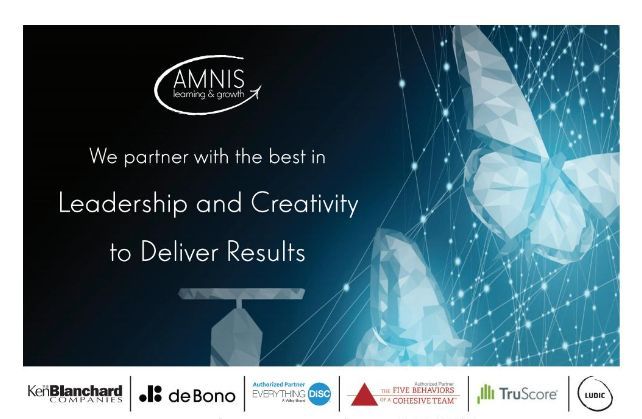
Πώς κάνουμε τους πελάτες να επιστρέφουν ξανά και ξανά σε εμάς
December 28, 2019
Πως μπορεί η Ελλάδα να βελτιώσει την ανταγωνιστικότητά της
February 16, 2020Spiros Paolinelis founder AMNIS Learning & Growth
Few businessmen and managers refuse that customer service is critical to the vitality of their organization. As Ken Blanchard argues, profit is the applause we receive for taking care of our people and our clients.
What is not always understood is that service is not a patchwork of individual actions and behaviors. Whatever we do to serve the customer, should be part of a Service Vision, a clear outline of what we want the customer experience to be at every point of contact with them. United States is considered one of the countries where service levels are good. However, the Blanchard research, which preceded the new version of our Legendary Service training program, reveals that there is much room for improvement: only 67% of respondents said their organizations had a clear service vision.
I suggest that we look at the customer service as what it really is, i.e. a theater performance, which is presented many times each day, every single time a client is encountering our company.
For a theater play, having great actors, each one playing their part very well, is hardly enough. Each role should be part of a single, cohesive scenario. This is the Service Vision of the company. What is the experience we want our customers to live each time we “touch” them? We need know what the “touch” points are and for each one paint a clear picture of what we want our customers’ experience to be like, so that they keep coming back to us. Writing this script is the responsibility of the company’s leadership; and this Service Vision should be an inseparable part and serve the overall company’s vision.
Then enters the play director, who will dress the scenario with his own point of view and will take care of the stage designs, equipment and actors. For the customer service these are the systems, processes and procedures, resources, selection and training of the right employees.
The “Director” is the higher management and those who lead those who provide the service to the customers. Itisthem, whowillexplaintoeachemployee, how they will play their role, what should be the experience of the customers each time we “touch” them.
Within such a frame, each actor-employee, will deliver their role as best they can, with their own personality, managing to be at the same time original and obedient to the Vision and the Values of the company.
When talking about customers, we tend to refer to the end customer, the one paying for our products and services. We tend to forget the internal customers, those upstream the value chain. Awaiter, does not matter how good and service-minded he is, cannot create a good customer experience if the cook has not done his job well. And the cook cannot do a good job without if he is not provided on time with the required equipment and ingredients. And none will do a great job if the restaurant owner does not create with his behaviors an environment where they love working.
One more thing, probably unexpected: the employee should consider himself as a good customer and treat himself accordingly!
If what we need is the delivery of Legendary Service, the kind of service that will make our customers come back to us again and again, then each service provider, irrespective of whether they serve an internal or external customer, should demonstrate with their behaviors that they are:
Committed: Being Committed to customers means living the customer service vision by knowing and understanding the impact of great poor service on your organization; acting on the belief that service is important; performing tasks with the customer in mind; and having goals and metrics for providing great service.
Attentive: Being Attentive to customers means listening to identify customer needs and wants by paying attention to customers’ verbal and nonverbal cues; being aware of surroundings and ignoring distractions; asking open-ended questions to draw information from the customer; acknowledging the customer’s needs; treating internal customers as if they are paying customers; and doing analysis on both internal and external customers.
Responsive: Being Responsive to customers means taking action that shows you care, such as listening actively to gain understanding; acknowledging feelings; offering solutions within your authority; gaining agreement; and expressing appreciation.
Empowered: Being Empowered for customers means unleashing the full extent of your power by practicing good self-care habits; being aware of the power you have to serve customers; continuing to increase your knowledge about your job; knowing your company’s policies and procedures; and personally handling all customer situations you may encounter.
Theabove constitute the acronym CARE, which is the backbone of our Legendary Service training program, where participants acquire the skills which will enable them to systematically demonstrate these characteristics.
